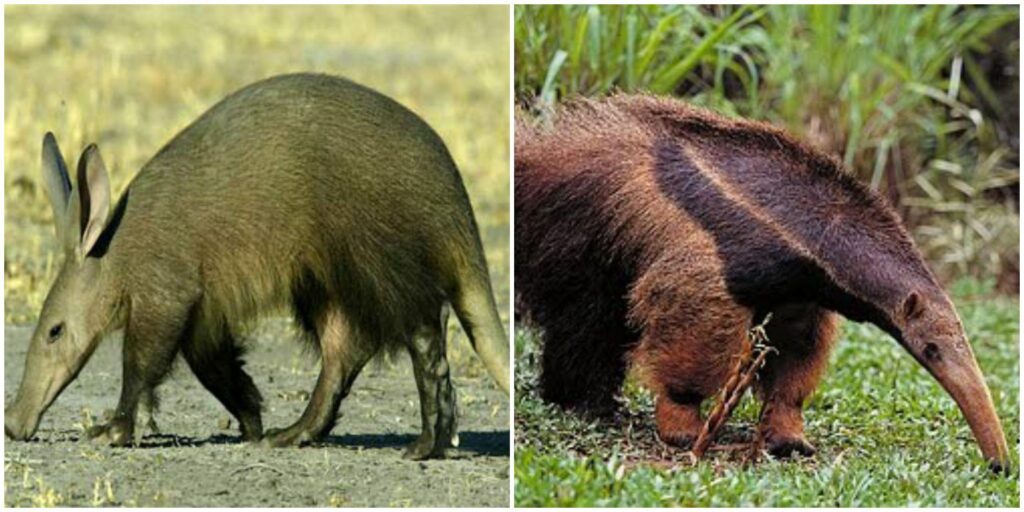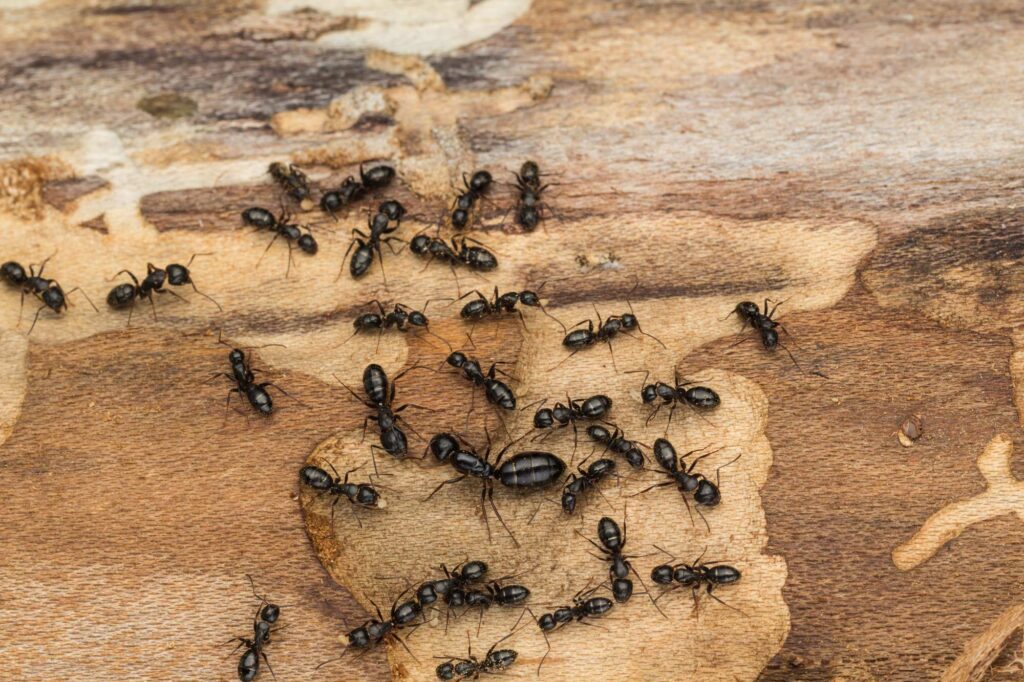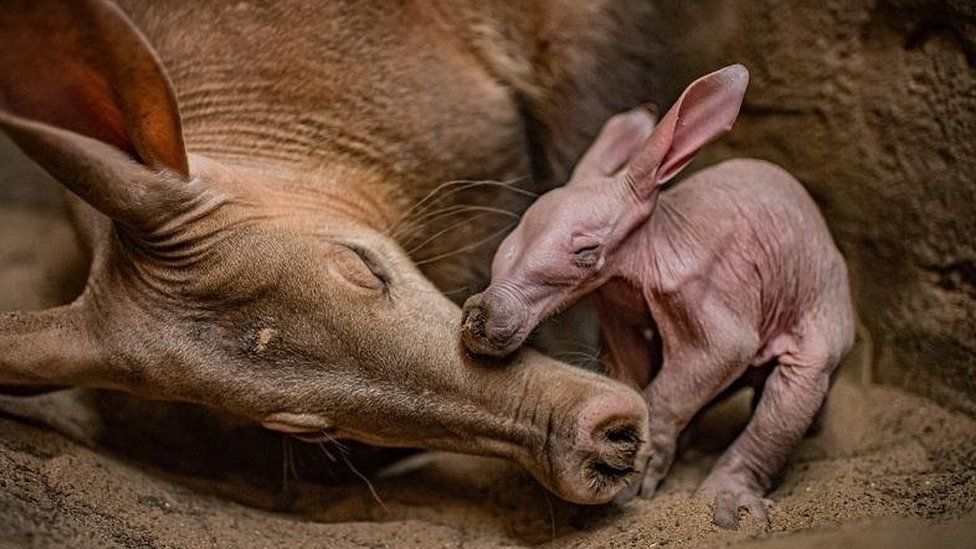Are you ready for the ultimate showdown between two fascinating creatures? Get ready to witness the battle of the century: Aardvark vs. Anteater! These quirky creatures may seem similar at first glance, but trust me, there’s more than meets the eye. From their physical characteristics to their eating habits, we’ll uncover the key differences that set them apart. So, grab a seat and prepare to be amazed as we dive into the world of these extraordinary animals. Let’s settle this once and for all – who will reign supreme, the Aardvark or the Anteater?
Understanding the Aardvark and Anteater Differences
Peering into the fascinating animal kingdom, it’s easy to mistake the aardvark and the anteater for doppelgangers. Both creatures sport elongated snouts, and their culinary preference leans heavily towards ants and termites. However, as we delve deeper into their lives, we find a tapestry of differences woven into their physical traits, habitats, diets, and reproductive strategies. Let’s embark on this explorative journey to comprehend how these seemingly similar creatures are, in fact, worlds apart.
| Aardvark | Anteater | |
|---|---|---|
| Scientific name | Orycteropus afer | Myrmecophaga tridactyla (Giant Anteater) Cyclopes didactylus (Silky Anteater) Tamandua |
| Physical characteristics | Distinctive elongated snout, curved claws | Long, bushy tail, curved claws |
| Habitat | Primarily Africa | Central and South America |
| Diet | Mainly ants and termites | Mainly ants and termites |
| Reproductive strategy | Slow and steady | Slow and steady |
These two creatures, despite their uncanny resemblance, are a testament to the marvel of evolution. They have perfectly adapted to their respective environments, with their unique traits serving as a testament to their survival. So, while they share similar diets, their front feet equipped with long, curved claws serve different purposes. For the aardvark, it’s for ripping open stubborn ant and termite nests, while the anteater uses them for defence and locomotion.
Similarly, their nocturnal lifestyle is another shared characteristic, but they have adapted uniquely to this as well. This is just a glimpse into the compelling world of aardvarks vs. anteaters, and as we delve deeper into their physical characteristics, habitats, and more, their differences become even more fascinating. Stay tuned to learn more about these incredible creatures.
Physical Characteristics: More than Meets the Eye

Aardvark vs. Anteater
As we embark on this journey of discovery, it’s essential to delve into the intriguing physical attributes of our nocturnal friends – the aardvarks and anteaters. Despite their shared love for ants and termites, these creatures have unique characteristics that distinguish them in the vast world of wildlife.
Let’s begin with the aardvark, a captivating creature that calls the African plains home. Picture a robust, pig-like body adorned with a coat of thin, yellowish-grey fur. Their stout physique provides a stark contrast to the anteater’s more streamlined form. The aardvark’s long, pointed ears, which can swivel independently, are a marvel of nature. This ability allows them to detect sounds from various directions, an invaluable skill when evading predators or seeking their next meal. A significant feature of the aardvark is its elongated, pig-like snout. Hidden within this snout is a sticky, elongated tongue, a perfect tool for capturing ants and termites. Additionally, their front feet, armed with formidable claws, are ideal for digging burrows and tearing open ant and termite nests. To round off their unique features, aardvarks possess tubular teeth that never stop growing, a feature absent in their anteater counterparts.
Check out: How Strong Are Orangutans? Discover Their Astonishing Power!
Turning our attention to the anteater, a resident of Central and South America. Their bodies, more slender than the aardvarks, are covered with coarse fur that varies from gray to brown. Their small, almost inconspicuous eyes may give the impression of poor vision, but they compensate with an extraordinary sense of smell. Like the aardvark, the anteater also boasts a long snout, a critical asset for capturing insects. Their powerful front claws, similar to the aardvark’s, are vital for defense, movement, and digging. However, there’s a significant deviation in their dental structure – or rather, the lack of it. Unlike aardvarks, anteaters have no teeth, relying solely on their long, sticky tongues to ensnare their prey.
As we dissect the physical characteristics of these fascinating creatures, the aardvark vs. anteater comparison reveals a tapestry of differences and similarities. Just as a book cannot be judged by its cover, the same applies to our friends here. Their physical characteristics are more than mere appearances; they are adaptations honed over millennia, enabling them to survive and thrive in their respective habitats.
Habitat: From Africa’s Vibrant Plains to the Lush Canopies of Central and South America
Let’s embark on a journey across the globe, charting the diverse habitats of our two protagonists, the aardvark and the anteater. From the sweeping savannas of Africa to the dense rainforests of Central and South America, these creatures have carved out unique niches for themselves.
The aardvark, a true African native, has claimed the sub-Saharan region as its home. It’s here in this expansive landscape, stretching from the grassy savannas to the verdant woodlands, where the aardvark thrives. This creature, with its stout, sturdy build, has a predilection for regions with sandy or clay soil. This preference isn’t arbitrary, but rather a strategic adaptation that facilitates its ability to dig deep burrows for shelter and to find its favorite meals – ants and termites.
Let’s now cross the Atlantic to explore the homes of the anteaters. These creatures inhabit the diverse landscapes of Central and South America. From bustling tropical rainforests to tranquil grasslands, they’ve adapted to a range of environments. However, what’s truly fascinating is the arboreal lifestyle of certain anteater species like the silky anteater and tamanduas. These tree-dwellers have evolved unique adaptations, allowing them to traverse the high canopies with ease.
The aardvark and the anteater, despite their physical similarities and shared dietary preferences, have etched out distinct territories in two separate continents. Their unique adaptations are not just superficial physical characteristics, but also deeply ingrained in the choice of their habitats. As we continue our exploration, let’s delve deeper into their behaviours, and how they’ve further adapted to their environments.
Behaviour: Solitary Dwellers and Agile Escapists
Despite belonging to different habitats and their distinctive physical characteristics, aardvarks and anteaters share a common trait in their behavior – they are both generally solitary creatures. This solitary lifestyle aligns perfectly with their feeding habits, as it allows them to take full control of the insect-rich territories they inhabit.
As the moon takes over the sky, the African landscapes come alive with the bustling activities of its nocturnal dwellers; among them is the aardvark. With their powerful claws, they expertly navigate the earth, digging intricate burrows. When danger is sensed, they deploy their remarkable agility to escape. Picture an aardvark running in zigzags, throwing off a predator’s pursuit, or rapidly excavating a hole to disappear into the ground.
Check out: What Does Raccoon Poop Look Like? A Complete Guide to Raccoon Scat Identification
Not just a simple burrow-dweller, an aardvark under threat will sometimes stand on its hind legs, using its tail for balance. This behavior is not just a sight to behold, but a survival tactic, giving the aardvark a better vantage point to survey their surroundings or adopt a defensive posture when cornered.
Anteaters, in contrast, can be either nocturnal or diurnal, their habits dictated by the unique demands of their Central and South American habitats. Unlike the burrow-digging aardvarks, anteaters prefer staying above ground. When an anteater senses a threat, it mirrors the aardvark’s behaviour; it stands tall on its hind legs, using its tail for balance. The giant anteater, in particular, can appear quite formidable when it takes this stance.
Read more about: Unveiling the Secrets of a Lion’s Tongue: All You Need To Know
Understanding the behavior of these fascinating creatures not only sheds light on their survival strategies but also underscores the importance of preserving their habitats. As we will explore in the next sections, the diet and reproduction habits of aardvarks and anteaters further highlight their unique adaptations and the delicate balance of their ecosystems.
Diet: A Common Love for Ants and Termites

ants
The African plains at night hold a spectacle that few get to witness. As the moon casts a silver glow over the savannah, shadows move stealthily across the terrain. One such shadow belongs to the aardvark, a nocturnal creature whose existence revolves around its insatiable appetite for termites. It’s a nightly feast for this solitary creature, and it can consume an astonishing 50,000 termites in a single outing. Its specialized tongue, narrow and elongated, can reach up to 30 cm in length, perfect for delving into termite mounds and extracting its prey.
Also check out: Leopard vs. Cougar: What Makes Them Different and Who Prevails in a Battle?
“Aardvarks absolutely love termites, and they will eat up to 50,000 termites in a single night.”
Thousands of miles away, in the diverse landscapes of Central and South America, the anteater shares a similar gastronomic preference. Like the aardvark, its diet primarily consists of ants and termites. Yet, unlike the aardvark, the anteater has a more varied menu. It also savors other insects, small vertebrates, even fruits when the opportunity arises. The anteater, with a tongue that can extend to an impressive 60 cm, surpasses its African counterpart in this anatomical feature.
| Aardvark | Anteater |
|---|---|
| Primarily eats ants and termites | Primarily eats ants and termites, also other insects, small vertebrates, and fruits |
| Tongue can reach up to 30 cm | Tongue can extend up to 60 cm |
These two unique creatures, though continents apart, share a singular love for ants and termites. Their tongues, though different in length, serve the same purpose: to ensnare as many delectable insects as possible. It’s a testament to the remarkable ways that nature equips its creatures to thrive in their respective habitats. The aardvark and the anteater, each in its own way, embodies this adaptability.
Reproduction: Slow and Steady

Aardvark
The dance of life unfolds in the animal kingdom in numerous intriguing ways, and the tales of aardvarks and anteaters are no different. Despite their solitary and somewhat aloof lifestyles, these creatures have an understated yet fascinating approach to reproduction, characterized by a slow and steady rhythm.
Aardvarks, the burrow-dwelling architects of the African savannah, do not adhere to a specific breeding season. This lack of a definite mating period is an intriguing aspect of their lifestyle, often catching the interest of zoologists worldwide. Males and females come together briefly for the solemn act of mating. Their rendezvous is short-lived, as both parties retreat to their solitary lives soon after. The magic of life, however, has already been set in motion.
Read more: “Are These the 10 Largest Wolves on the Planet? Unveiling the Mighty Beasts”
A single offspring, a result of a gestation period spanning approximately 7 months, graces the earth. The young aardvark, a mirror image of its mother with its elongated snout and powerful claws, stays under her care for about 6 months. During this time, it learns the art of digging and the secret to a termite-rich diet before venturing out independently.
Meanwhile, the anteaters of Central and South America follow a slightly varied script in the story of life. Similar to aardvarks, they breed at any time of the year, their meetings brief and solely for the purpose of reproduction. The gestation period is slightly shorter in comparison, lasting for about 5 to 6 months depending on the species.
The birth of a single anteater pup marks the beginning of an intense mother-offspring bond. The young one remains with its mother for nearly a year, often seen hitching a ride on her back. This close association allows the pup to learn crucial survival skills, including the fine art of foraging for ants and termites with their specialized tongues.
The slow reproductive rate of both aardvarks and anteaters, producing only a single offspring per mating period, underscores their vulnerability to environmental and human disruptions. It serves as a poignant reminder of the need to preserve their habitats and respect their unique ways of life.
Unraveling the Intricate Tapestry: Similar yet Different
As we delve into the fascinating world of aardvarks and anteaters, it’s hard not to marvel at the uncanny resemblance they share. Their love for ants and termites, their elongated snouts, and their solitary lifestyles hint at a shared lineage. But this is where nature, in all her deceptive simplicity, plays a masterstroke. Despite their striking similarities, these creatures are as distinct as they are alike.
Aardvarks and anteaters dwell on different continents, each adapting to its unique environment and evolving distinct physiological attributes. The anteater, with its longer tongue, can reach into deeper crevices for food, while the aardvark’s sturdy body enables it to burrow into the African terrain. Their behaviors too are shaped by their homes – the hot, arid landscape of Africa for the aardvark, and the lush, tropical rainforests of Central and South America for the anteater, each requiring different survival strategies.
This paradox of similarity and difference is a testament to the wonder of convergent evolution – a process where unrelated species develop similar characteristics as they adapt to similar environments or ecological niches. And yet, beneath this veneer of similarity, their scientific classification reveals their uniqueness. They belong to different orders; the aardvark is part of the Tubulidentata order, while the anteater belongs to the Pilosa order.
So, the next time you encounter an aardvark or an anteater, whether in a book, a documentary, or perhaps on an adventurous trip, remember this intriguing tale of nature’s artistry. They may seem similar, but delve a little deeper, and you’ll find they’re as different as chalk and cheese. This comparison of the aardvark and the anteater, as different as they are similar, is a beautiful reminder of the diversity and complexity of life on our planet. Each creature, unique in its own right, contributes to the rich tapestry of our world.
Aardvarks and anteaters differ in their physical characteristics, habitats, diets, and reproductive strategies. Aardvarks have a stocky body resembling a pig, while anteaters have a slender body. Aardvarks have thin, yellowish-grey fur, while anteaters have coarse fur that is typically gray or brown. Aardvarks are generally larger than anteaters, except for the silky anteater which is smaller in size. Aardvarks have long, pointed ears, while anteaters have small eyes and poor vision but a keen sense of smell. Aardvarks have tubular teeth that never stop growing, while anteaters have no teeth. Aardvarks belong to the order Tubulidentata, while anteaters are in the order Xenarthra.
Aardvarks are native to Africa and have a widespread distribution in sub-Saharan Africa. They can be found in savannas, grasslands, and woodlands. Aardvarks prefer regions with sandy or clay soil for easier digging of burrows and hunting insects. Anteaters, on the other hand, are found in Central and South America. They live in varied habitats such as tropical rainforests and grasslands. Some species of anteaters, like the silky anteater and tamandua, are arboreal and live in trees.
Both aardvarks and anteaters primarily feed on ants and termites. They eat a large quantity of these insects. Aardvarks can eat up to 50,000 termites in a single night. Anteaters have a similar feeding behavior. However, anteaters have a more varied diet that includes other insects, small vertebrates, and fruits.
Aardvarks and anteaters have different reproductive strategies. Aardvarks do not have a definite breeding season and meet for a short time for mating before returning to their solitary lifestyle. A single offspring is born to aardvarks after a gestation period of 7 months, and the young aardvark stays with its mother for about 6 months before becoming independent. Anteaters also breed at any time of the year and meet during the mating period. Female anteaters give birth to a single offspring after a slightly shorter gestation period of 5 or 6 months, and the young anteater remains with its mother for up to a year. Both aardvarks and anteaters have a slow reproductive rate, with females producing only one offspring per year.

